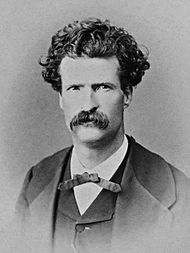Sagebrush School facts for kids
Quick facts for kids Sagebrush School |
|
|---|---|
| Cultural origins | American Old West |
| Features | Hoaxes, wit, audacity, irreverent attitude |
| Subgenres | |
| Drama, essays, fiction, history, humor, journalism, memoirs, and poetry | |
| Regional scenes | |
| Nevada Territory, California | |
The Sagebrush School was a group of writers who lived and worked in Nevada a long time ago. They were active mainly between 1859 and 1914. The name "Sagebrush School" comes from the sagebrush plant, which grows a lot in Nevada.
This group included many different types of writing. They wrote plays, essays, stories, history books, funny pieces, news articles, personal memoirs, and poems. The idea for the name "Sagebrush School" came from a writer named Ella Sterling Mighels. She said that these books truly felt like they came from the land where the sagebrush grows.
The roots of this writing style were in the American Old West. The Sagebrush School was a big part of American literature from Nevada's mining areas. These writers were known for being very smart and talented. Their style often included funny tricks, clever jokes, bold ideas, and a playful, disrespectful attitude.
The movement began with Joseph T. Goodman, who worked for a newspaper called the Territorial Enterprise in Virginia City, Nevada Territory. The most famous writer from the Sagebrush School was Mark Twain, who also worked at the Territorial Enterprise. In 2009, the Sagebrush School was honored by being added to the Nevada Writers Hall of Fame.
Who Were the Sagebrush School Writers?
Many talented people were part of the Sagebrush School. They shared a unique way of writing that captured the spirit of the American Old West.
- Samuel Clemens (Mark Twain)
- Rollin M. Daggett
- Samuel Post Davis
- Alfred R. Doten
- Thomas Fitch
- James W. Gally
- Joseph T. Goodman
- Charles Carroll Goodwin
- Fred H. Hart
- Sarah Winnemucca Hopkins
- Denis E. McCarthy
- Arthur McEwen
- Henry Rust Mighels
- John Franklin Swift
- James William Emery Townsend
- Joseph Wasson
- William Wright (Dan DeQuille)
Where Can You Read Their Work?
The writings of the Sagebrush School can be found in special collections called anthologies. These books gather different works from various authors.
- Basso, Dave, Sagebrush Chronicles (1971)
- Witschi, Nicolas S. (ed.), The Sagebrush Anthology: Literature from the Silver Age of the Old West (2006)
See also
 In Spanish: Escuela de Sagebrush para niños
In Spanish: Escuela de Sagebrush para niños


